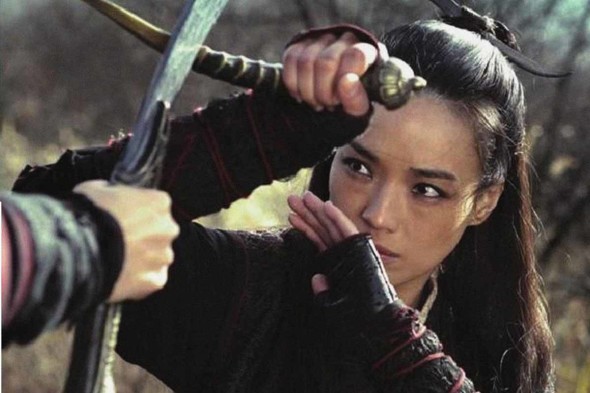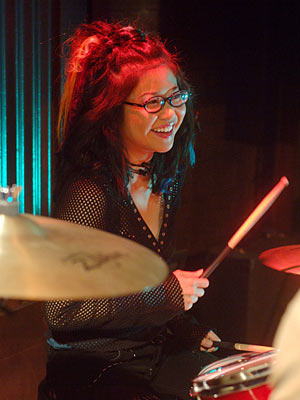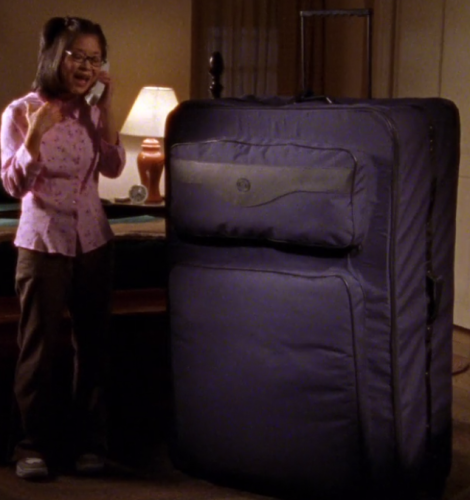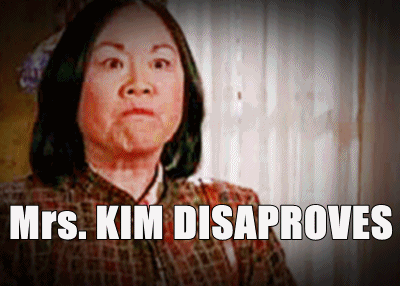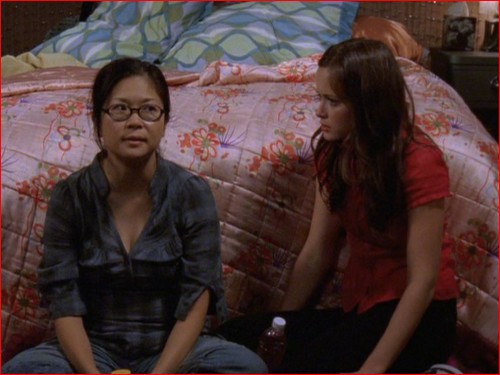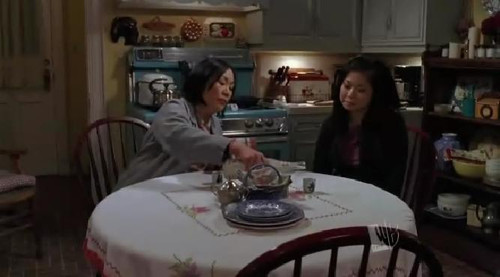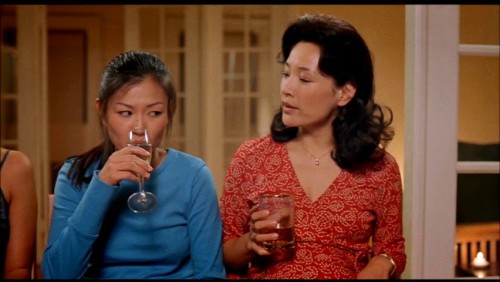I was out of town for a long weekend and then catching up on what I had missed when I found out Hsiao-Hsien Hou’s The Assassin was having its last showing (a late matinee, not even an evening show) in my art-house-friendly town. I wasn’t even aware the film had begun its run. I dropped everything to see it, and if this movie is playing nearby, so should you.
Because The Assassin packs nearly every kind of arty, intersectional-feminist fan’s fantasy into one movie. It centers around a woman of color (it takes place in China in the middle ages and its director is Taiwanese, so most of the actors are Taiwanese too) whose main scenes are with other women of color (this film has relatively little dialogue but passes the Bechdel test with no problem). The main character, Nie Yinniang (Qi Shu) is the assassin of the title, an action heroine (or maybe an anti-heroine: for much of the film we don’t know) with beautifully choreographed martial arts scenes: this film unlike some other films of the Wuxia genre doesn’t feature the ridiculous airborne hijinks that defy suspension of disbelief.
The Assassin, as a historical costume drama also shows off its high-born characters in sumptuous period robes, their homes decorated with curtains and tapestries as fine, if not finer than their clothes: we even see some of the palace intrigue through these gauzy, wafting borders, as if we, like the main character are spying through them. And this film is stunningly shot (by cinematographer Ping Bin Lee): one of the only subtitled films in which I missed at least a little of the dialogue because I was too busy looking at what was onscreen. The Assassin even has a little, old-fashioned black magic in its plot, which made me love it even more.
What the film doesn’t do is pander to a Western audience: the story is apparently well known in China in many different incarnations, but not in the US. Still, I much prefer a film that makes me sometimes wonder what’s going on to one like The Walk with its over-explanation and bad performances obfuscating its emotionally-fraught (my palms and even the soles of my feet were sweaty) 3D action scenes. The Assassin isn’t in 3D, but the moves are so fast, smooth and quiet they’re like dance captured on film (although these scenes probably use some form of camera trickery I couldn’t spot it). The camera astonishes elsewhere too. At one point we are looking, in a long take, at a curtained alcove of the Governor’s palace and we suddenly see Yinniang standing there, listening in the shadows, and we’re not sure if she just appeared or if we didn’t notice her before.
We watch much of this film as a dance performance. Yinniang is often silent: more than one critic has compared her to the sometimes ambiguous main characters in Westerns. We know that she is trained as a killer and see her kill at the start of the film, but we also see that she won’t murder a target in front of his young son. Her teacher, a nun says, “The way of the sword is without compassion,” but we don’t know, for the majority of The Assassin, if that way will turn out to be Yinniang’s and are often looking at her face–and her actions–for clues.
In other words, we’re looking at a taciturn, complex main character not uncommon in movies about men (especially Westerns) but pretty much unheard of in films about women (not just her teacher but also one of Yinniang’s fighting opponents is a woman). At the behest of her teacher, Yinniang returns to her hometown to kill her cousin, Tian Ji’an (Crouching Tiger, Hidden Dragon’s Chen Chang), the independent Governor of her home province, but her mother, not knowing the reason for her return puts her into the fancy, movement-constricting robes other women wear. We see Yinniang trying on the outfit and then wearing her signature black coat and wrapped boots for the rest of the film. And unlike other long-haired women action-adventure heroines she actually has her hair tied in such a way that it won’t get in the way of her fighting.
We find out later that Yinniang was at one time betrothed to her cousin and the two were given matching pieces of carved jade to formalize this arrangement. When she makes her first attempt on the Tian Ji’an’s life she leaves behind her piece. “She wanted me to recognize her before taking my life. She wanted me to know why,” he says.
But the film doesn’t waste much time portraying Yinniang as heartbroken, though her quiet, watchful demeanor is in keeping with the trauma she has endured, in both the separation from her family at a young age and her conscription into killing. At the same time, she also has a romantic interest (Satoshi Tsumabuki) who, from the expression we see on his face, seems to realize no woman is as hot as the one who pushes a bad guy in front of you at the right moment to stop an arrow that was headed for your chest.
Hsiao-Hsien Hou won “Best Director” at Cannes for this film, so I don’t understand the lack of fanfare for The Assassin now. In contrast to several acclaimed films I’ve seen lately, I was never bored during The Assassin and wished the film lasted longer. At the matinee I spotted three, youngish Asian women (three more than I would expect at that showtime, in that neighborhood) in the audience as the lights came up, one of whom was beaming at what she had just seen. If only film distributors and male critics would realize a lot of women like (and unlike!) her would love to see this terrific-looking, well-acted, martial-arts film about a complicated, Asian woman who is nobody’s victim or martyr.
[youtube_sc url=”https://www.youtube.com/watch?v=YSoXoOAY1zU” iv_load_policy=”3″]
Ren Jender is a queer writer-performer/producer putting a film together. Her writing besides appearing every week on Bitch Flicks has appeared in The Toast, xoJane and the Feminist Wire. You can follow her on Twitter @renjender.
